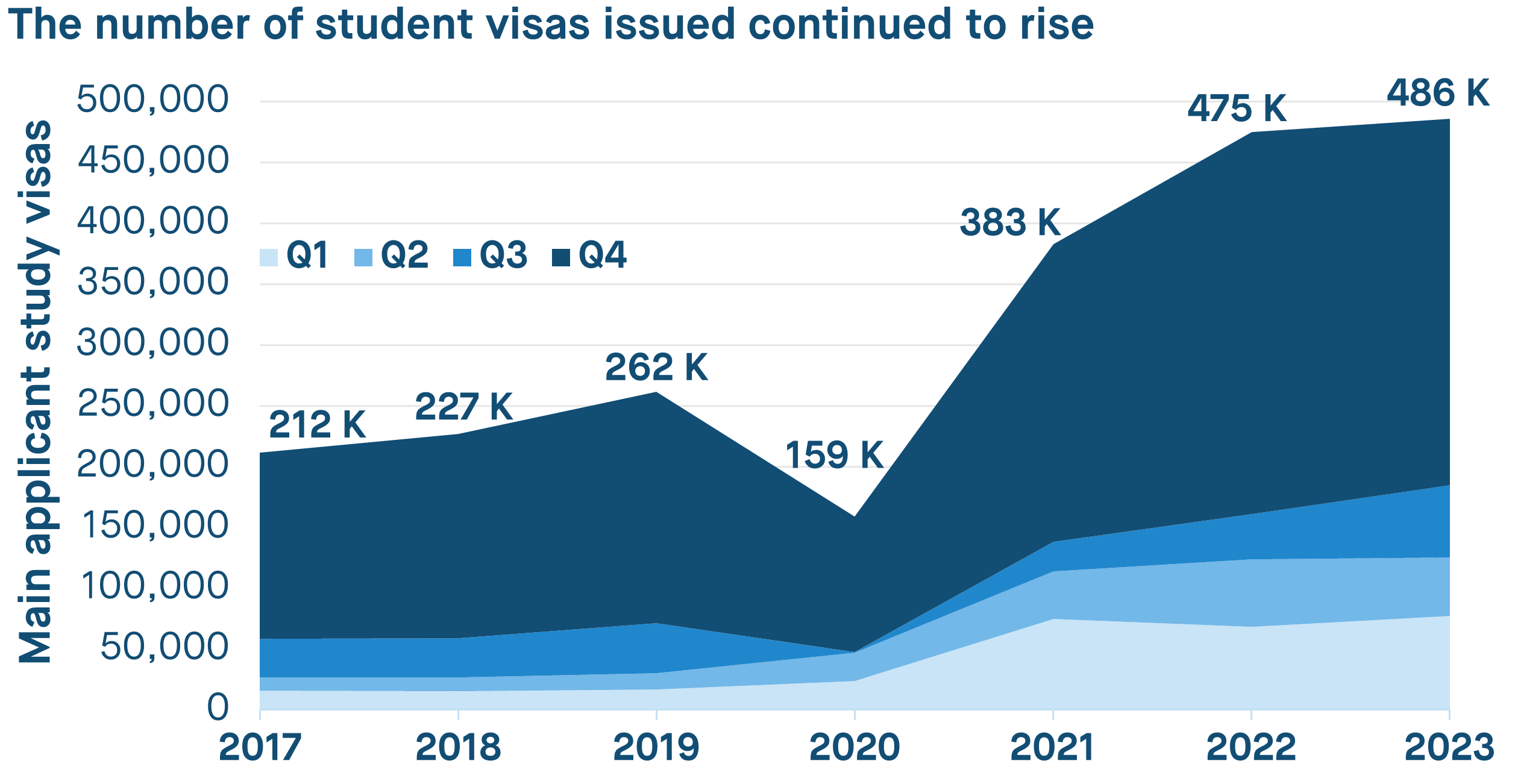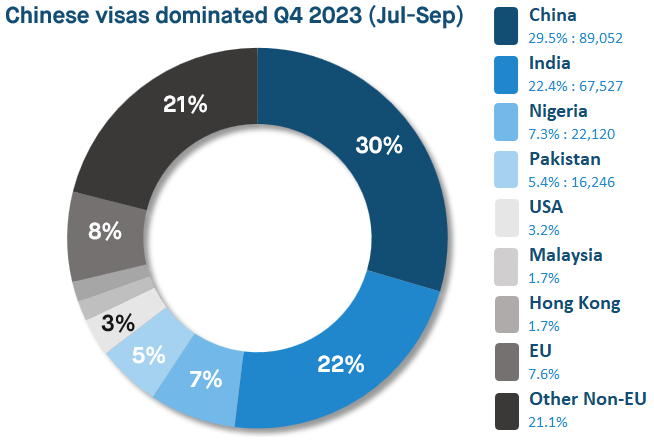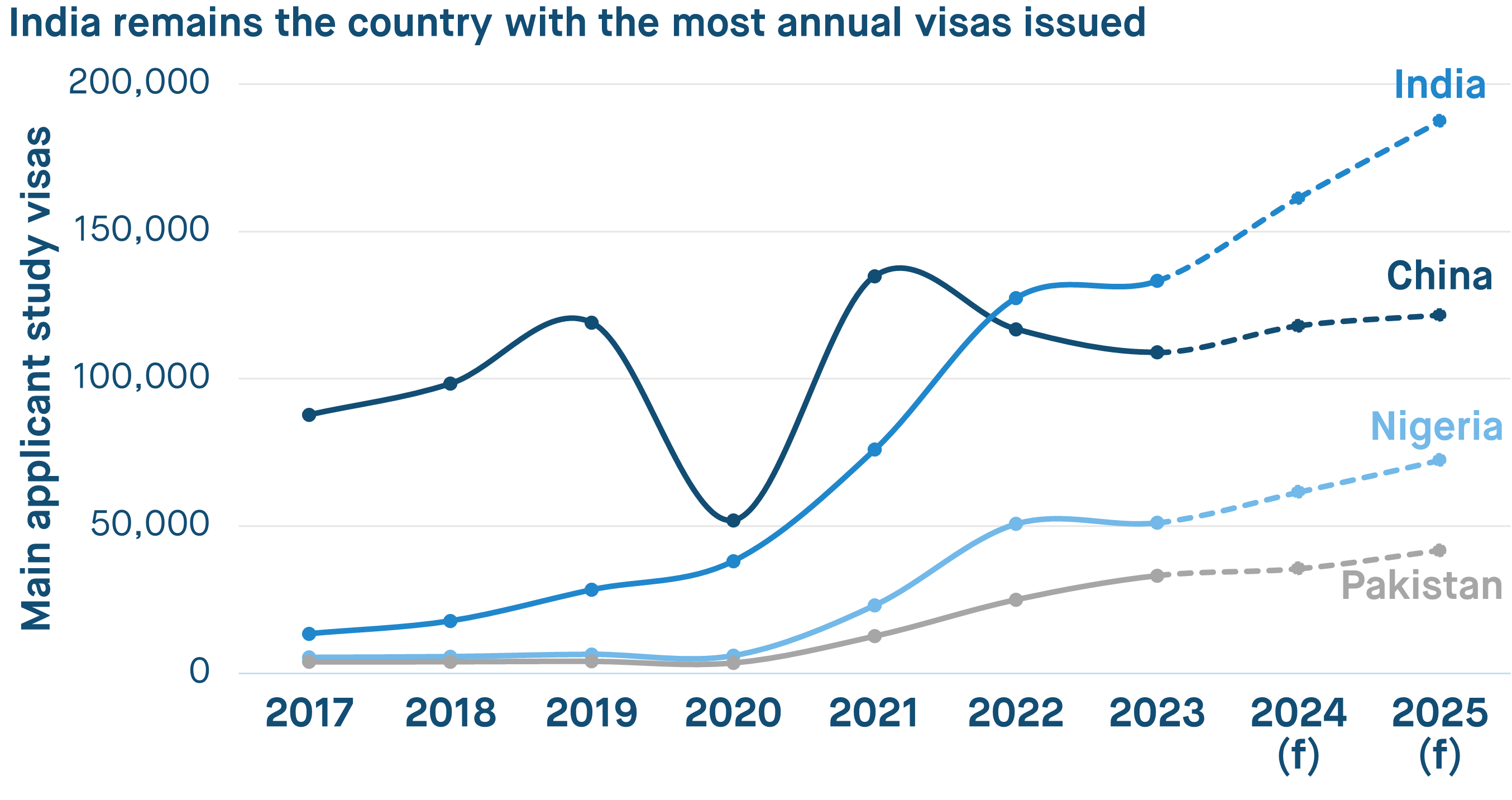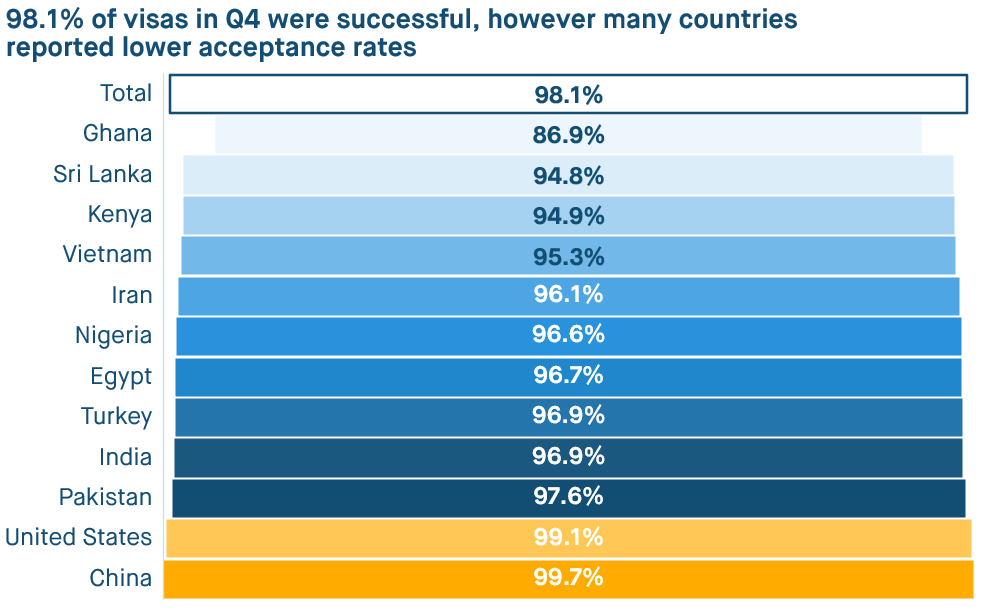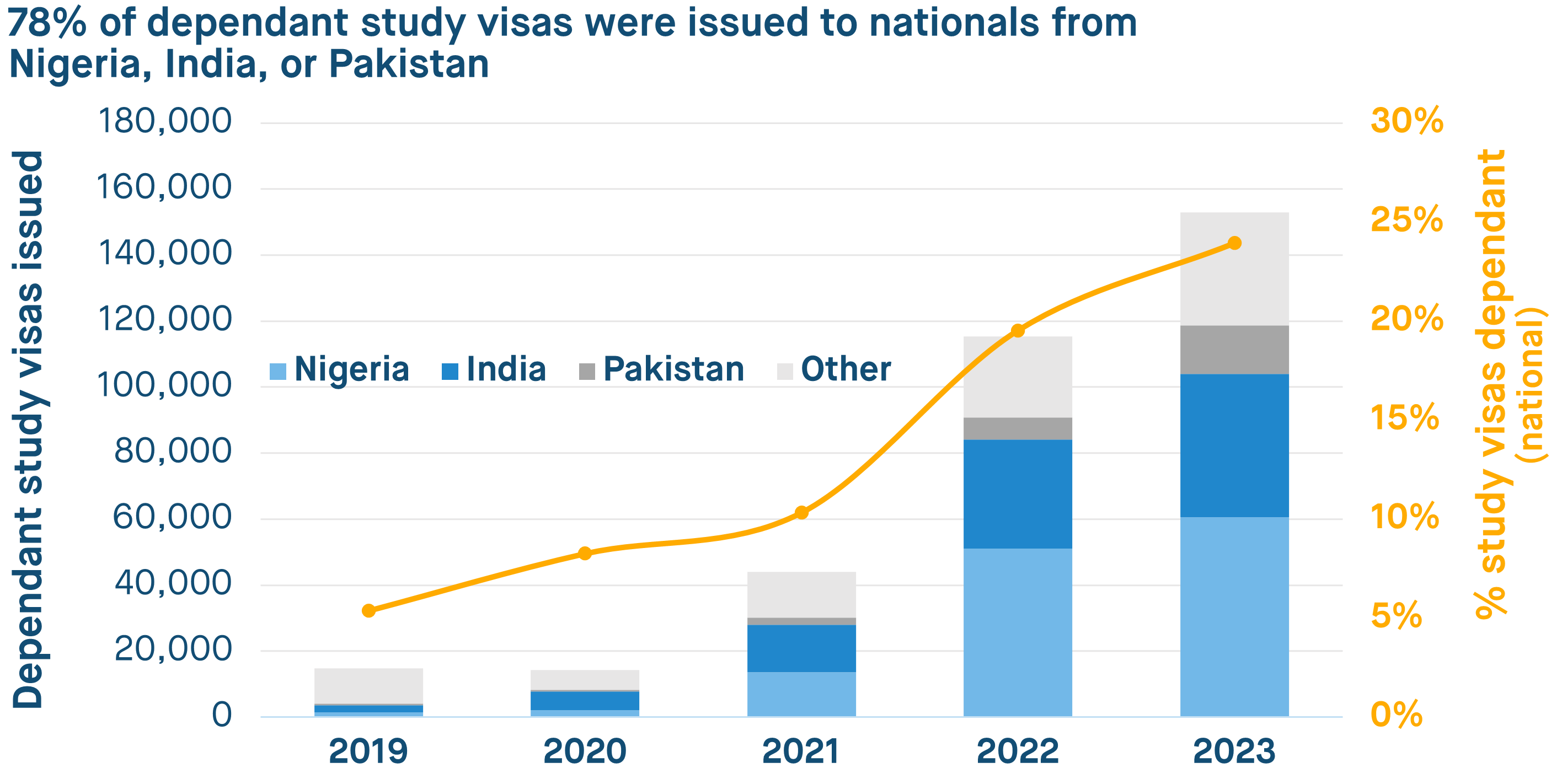Indian Students Lead in Visas for Second Year
Key findings
- Total visas issued are up for the 2023 academic year.
- 30% of the visas issued in the most recent quarter were to students hailing from China.
- Despite Chinese students dominating the quarter, students from India were issued the highest number of visas in the 2023 academic year.
- The vast majority of visas (98%) applied for are granted, however the acceptance rate varies by country.
- Ahead of changes in policy regarding dependant visas, the proportion of student visas being issued to dependants is up in 2023.
- More than three quarters of dependant student visas are issued to nationals from Nigeria, India, or Pakistan.
Total yearly visas
Source: gov.uk, StuRents
The chart above shows the number of main applicant study visas issued in each academic year since 2017. The chart splits the annual visas into the quarter in which they were issued.
The chart shows that student visa numbers are up significantly since 2017. 2023 figures are 130% higher than those of 2017. However, it is likely that the rate of growth is slowing. Year-on-year issued visas are up just 2.3% this year.
The data also shows that whilst the majority of visas were still issued in the final quarter of the year, the timing of visas being issued is more evenly distributed in 2023 than in 2017. In 2017, 72% of visas were issued in Q4 (Jul-Sep), however in 2023 this dropped to 62%.
Q4 visas
Source: gov.uk, StuRents
The chart above shows the split of main applicant study visas issued in Q4 2023 (Jul-Sep) by nationality.
The data shows that Chinese students received the most visas this quarter, making up 29.5% of visas issued. This was followed by Indian students, who were granted 22.4% of visas.
Yearly visas by country
Source: gov.uk, StuRents
The chart above shows the visas issued in select key countries since the 2017 academic year.
The data shows that, for the second consecutive year, India had the highest number of visas granted in 2023. Prior to this, China had led in visa figures. Chinese numbers fell 6.7% this year; total numbers are now 8.4% lower than pre-covid 2019 figures. Meanwhile, the increase of 4.6% in Indian visas issued this year means 2023 figures are 370% higher than in 2019.
Nigeria and Pakistan have shown extreme growth since 2019, jumping by 649% and 712% respectively. However, it is possible that the rate of growth is slowing as the increase in visas for these countries this year is much less than in 2022.
Forecasts predict that visa numbers for these key markets will likely continue to increase in the coming years.
Application success rates
Source: gov.uk, StuRents
The chart above shows the acceptance rates of main applicant study visas in selected countries in the most recent quarter.
The data shows that across all visas applied for in Q4, 98.1% were successfully issued. Whilst this rate is very high, some countries reported slightly lower success rates. In particular, Nigeria, India and Pakistan were all less than the total at 96.6%, 96.9% and 97.6%.
The US and China were noteworthy in their success rates being higher than the national level. 99.1% and 99.7% of applications from these countries respectively were approved.
Dependant visas
Source: gov.uk, StuRents
The chart above shows the number of dependant study visas issued in each academic year since 2019, as well as the proportion of all study visas issued classified as dependant.
In January 2024, policy regarding international students bringing dependants into the UK will change. Foreign postgraduate students on non-research courses will no longer be able to bring family members to accompany them during their studies. It is possible that this upcoming change has led to a sudden increase in the number of dependant visas being applied for and issued in the most recent years.
Total dependant visas issued were up 32.7% year-on-year in 2023, making it 931% higher than in 2019.
The proportion of study visas classified as dependant rather than main applicant was also up in 2023 and now stands at 23.9%. This compares to just 5.4% in 2019.
The majority (77.6%) of dependant visas issued were to nationals from just three countries: Nigeria, India, and Pakistan. These particular countries only made up 27.2% of dependant visas in 2019.
It is very hard to tell how the upcoming policy changes will affect these numbers, but it is likely that figures will drop significantly. This could also have a severe impact on main applicant visa figures, particularly for these nationalities, as the students may choose to study elsewhere.
Conclusion
Whilst visa numbers are up year-on-year, the rate of growth is slowing. With upcoming policy changes, it is very possible we will start to see a severe slowing or even reduction in the number of visas being issued.
The demographic of international students coming to the UK to study has shifted massively in recent years, with the all-important Chinese market no longer leading. It is important to consider the implications this could have on the student accommodation market. In particular, the varying budgets of students from different countries is something that StuRents is able to provide in-depth insights into.
Share



